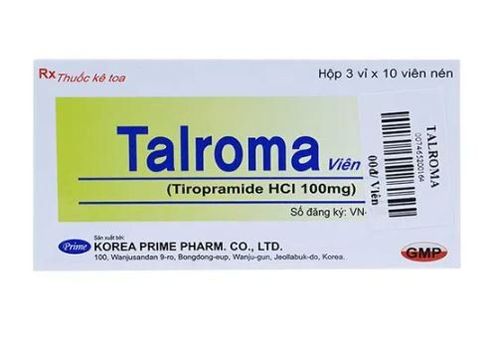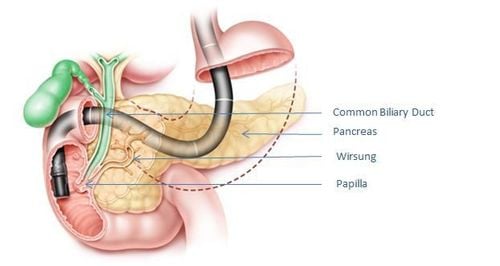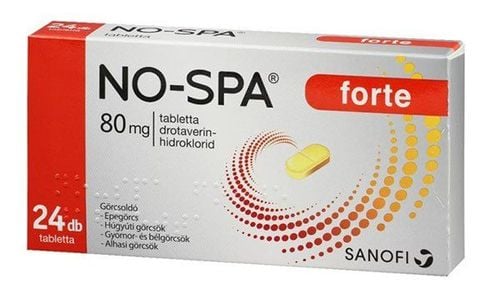This is an automatically translated article.
Acute obstructive cholangitis and cholecystitis are common medical and surgical emergencies. The disease can completely lead to serious complications, even life-threatening if the patient is not diagnosed and treated promptly. Acute cholangitis requires a combination of medical and surgical interventions.
1. What is acute obstructive cholangitis?
Cholecystitis or acute cholangitis is the term for acute inflammation and infection of the gallbladder and bile ducts. Pathogenesis is often related to gallstones and biliary tract stones. However, it may be due to a number of other factors combined such as hypoperfusion, biliary dyskinesia, toxic chemical contamination, infection or allergic reactions ...
Obstructive cholangitis Acute obstruction in Vietnam is mainly caused by 2 main causes: worms and gallstones, of which the majority (about 95%) are large-sized gallstones. In addition, gallstones are the second leading hepatobiliary disease in Vietnam, only after hepatitis. According to statistics, the common types of gallstones in European and American countries are mainly gallstones (90%) with the nature of cholesterol stones. In France, according to statistics, the prevalence of gallstones in adults is about 10-15%, while in Western Europe and South America it is about 10-30%. Particularly in Japan, gallstones account for about 5% and mainly bile pigment stones.
Human bile is a sterile fluid, in case the bile duct is blocked, it will cause the movement of bile to stagnate, which can lead to infection, causing inflammation of the urinary tract. acute obstructive biliary tract. Acute cholangitis can also occur after cholecystitis or procedures (such as endoscopic retrograde cholangiopancreatography (ERCP)) that cause bacteria to regurgitate up the common bile duct.
Some other causes leading to acute obstructive cholangitis :
Certain types of tumors such as pancreatic cancer, cholangiocarcinoma, vater tumor or liver portal tumor; Narrowing of the biliary tract due to various causes; Hernia of the common bile duct; Biliary tract disease in AIDS patients; Parasitic infections such as roundworms and liver flukes.
2. Symptoms of acute cholangitis
Patients with acute obstructive cholangitis often have 3 specific symptoms, called Charcot's triad, including jaundice, fever, and right upper quadrant pain (found in about 50-70% of patients). In which, adults have unclear manifestations, easily confused with other surgical abdominal pathologies.
Some patients (approximately 10-20%) with severe obstructive cholangitis have severe sepsis-induced hypotension leading to shock and confusion, referred to as Reynolds' five syndromes.
Acute cholangitis is classified into 3 grades, including grade 1 (mild), grade 2 (moderate) and grade 3 (severe). In particular, acute cholangitis grade 3 is a patient with both cholangitis and damage to the function of at least 1 other organ such as cardiovascular, nervous, respiratory, renal, hepatic and hematological.
Some other features suggest obstructive cholangitis:
The patient may have signs of itchy skin or discolored stools; Previous medical history with documented gallstones, common bile duct stones, recent cholecystectomy, ERCP or other invasive procedures involving the biliary tract, HIV/AIDS infection; Patients may develop peritonitis, but this is rare and other causes should be considered before diagnosing obstructive cholangitis. Diagnostic criteria for acute obstructive cholangitis :
Symptoms of systemic infection include: High fever, chills with test results demonstrating infection such as increased white blood cell count, elevated CRP; Symptoms of cholestasis such as jaundice and abnormal test results of liver function (elevated liver enzymes) and increased bilirubin.

Sốt cao là tình trạng thường gặp khi bị viêm đường mật tắc nghẽn cấp tính
3. Treatment of acute obstructive cholangitis
Initial treatment for acute cholangitis includes fluid resuscitation, correction of coagulopathy, and administration of potent, broad-spectrum antibiotics. Particularly in critically ill patients with shock, it is necessary to provide adequate oxygen and correct water and electrolyte balance.
At the same time it is necessary to closely monitor vital signs such as pulse, blood pressure, temperature and breathing rate. Antibiotic treatment requires such requirements as intravenous use before blood culture for antibiotic, the effect of antibiotics should be effective against both anaerobic and gram-negative bacteria.
Most patients with acute obstructive cholangitis respond well to antibiotic therapy, but some patients require biliary drainage to treat biliary obstruction. The form and time of drainage depends on the condition, severity of the patient, and in accordance with the capacity of the treatment facility. Experts recommend that there are 3 stages in biliary drainage, including:
Stage I: Assess and review the patient's signs; Stage II: Conduct early biliary drainage; Stage III: Some cases require urgent bile drainage. The recommended form of drainage in obstructive cholangitis is endoscopic drainage. However, in some cases, only percutaneous transhepatic biliary drainage can be performed if endoscopic biliary drainage cannot be performed.
Finally, surgical treatment in acute obstructive cholangitis may be indicated, but the choice depends on the cause of the disease and some mandatory requirements of the patient.
In some patients with acute cholangitis due to an unresectable tumor (such as pancreatic head cancer), a transjejunostomy can be performed when the patient is not having severe symptoms.

Sử dụng kháng sinh mạnh để điều trị viêm đường mật tắc nghẽn cấp tính
4. Complications of acute cholangitis
In patients with severe biliary tract infection that can lead to complications of liver abscess, liver failure or sepsis; Severe acute obstructive cholangitis can cause septic shock, multi-organ damage such as acute renal failure, heart failure, neurological disorders, respiratory failure, liver failure and hematological disorders; Patients treated with percutaneous or endoscopic biliary drainage may have complications such as percutaneous bleeding, intra-abdominal bleeding, secondary infection or bile leak... Mortality rate of patients Acute obstructive cholangitis is about 10%. Some poor prognostic factors in patients include:
Age over 50; Female gender; Biliary stenosis due to cancer or following retrograde cholangiopancreatography; Symptoms include hypotension, multi-organ damage; History of cirrhosis or enteritis; Poor or unresponsive to initial antibiotic treatment; The white blood cell count at admission is over 20000/mm3, total bilirubin is over 880 μmol/L. Acute obstructive cholangitis and cholecystitis are common medical and surgical emergencies. The disease can completely lead to serious complications, even life-threatening if the patient is not diagnosed and treated promptly. Therefore, when symptoms of the disease appear, you should go to specialized medical facilities for examination and treatment, to avoid dangerous complications.
Please dial HOTLINE for more information or register for an appointment HERE. Download MyVinmec app to make appointments faster and to manage your bookings easily.













